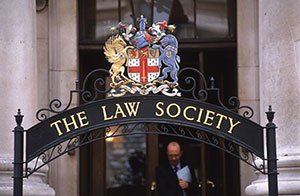The number of female practice certificate (PC) holders increased yet again by 3% to 67,393 from 65,147 as at July 2016, yet number of female partners remained relatively stagnant increasing only by seven to 8,105, according to the latest Annual Statistics Report from the Law Society, a trend echoing last year’s report.
The report evidences that the legal profession is increasingly diversifying, but the changing demographic has not translated directly to partnership positions.
The number of female practice certificate (PC) holders increased yet again by 3% to 67,393 from 65,147 as at July 2016, yet the number of female partners remained relatively stagnant increasing only by seven to 8,105 according to the latest Annual Statistics Report from the Law Society.
Total number of partners in England and Wales levelled at 28,187.
While 41.7% of men are represented at partner level in private practice, only 18.8% of women were. The gap, however, has been narrowing over recent years with the point gap down by just over three points across five years.
The number of women PC holders sits at 67,393, just shy of men’s representation at 68,783.
Even at trainee level, women represented 62% of all registrations, a long term trend in the Law Society’s data, with the increase in the number of trainee registrations almost evenly split between men and women. While 49% of the 271 additional trainee registrations were men, 51% were women.
Trainee registrations overall had jumped 5% higher than 2015’s 5,457 total, bumping up to 5,728.
This year’s total falls short of 2007-08’s peak when 6,300 trainees registered. At its lowest there were just 4,869 registrations in 2011-12.
Further, in a wider market shift, while the number of private practice firms in 2016 grew by 0.3% following five years of decline this year, Alternative Business Structures (ABS) showed far higher growth at 32% with a significant turnover.
The report, finalised by the Law Society this week, offered a snapshot of the profession. The report stated that 475 (ABS) were in operation as of July last year, 116 more than 2015 figures.
Collectively, ABS structures contributed 11.7% of total turnover in the market, a total of £2.2bn according 2014/15 turnover information available to the Law Society.
The proportion of solicitors working in-house rose to 22% in July 2016, which has been growing consistently since the year 2001 when it stood at 16%.
Ethnic practice certificate holders were also up only slightly by 3% from 18,547 to 19,145. The proportion at partner level, however, again remained lower at 23% than the equivalent proportion of all White European solicitors which sits at 34%.
The proportion of BAME groups accepted onto first degree law courss increased from 35.7% in 2015 to 36.4% last year, totalling 6,495 of the 17,855 total acceptances.
While the profession is diversifying, this remains to be consolidated at the top level.











